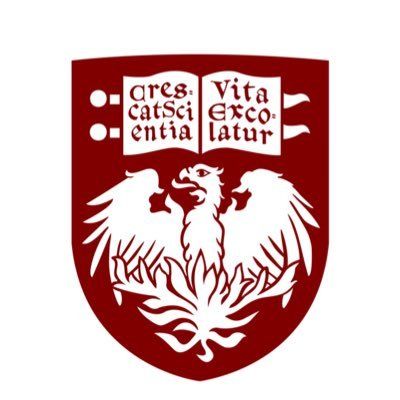预约演示
更新于:2025-05-07
HER2 x Tyrosine kinase
更新于:2025-05-07
基本信息
关联
801
项与 HER2 x Tyrosine kinase 相关的药物靶点 |
作用机制 HER2拮抗剂 [+1] |
在研机构 |
原研机构 |
非在研适应症 |
最高研发阶段批准上市 |
首次获批国家/地区 中国 |
首次获批日期2024-12-17 |
作用机制 HER2拮抗剂 [+1] |
在研机构 |
原研机构 |
在研适应症 |
非在研适应症- |
最高研发阶段批准上市 |
首次获批国家/地区 美国 |
首次获批日期2024-12-04 |
3,983
项与 HER2 x Tyrosine kinase 相关的临床试验NCT06348134
Assessing the Efficacy and Safety of Optimal Neoadjuvant to Adjuvant Anti-HER2- Based Therapy in Nigerian Women With HER2+ Breast Cancer
Doctors leading this study would like to learn about providing cancer treatment/therapies to Nigerian women with breast cancer based on their human epidermal growth factor receptor 2 (HER2) status. This study will focus on the efficacy and safety of anti-HER2 cancer treatment before and after surgery.
开始日期2026-01-01 |
申办/合作机构 |
100 项与 HER2 x Tyrosine kinase 相关的临床结果
登录后查看更多信息
100 项与 HER2 x Tyrosine kinase 相关的转化医学
登录后查看更多信息
0 项与 HER2 x Tyrosine kinase 相关的专利(医药)
登录后查看更多信息
50,329
项与 HER2 x Tyrosine kinase 相关的文献(医药)2025-12-31·Human Vaccines & Immunotherapeutics
Discussion on the mechanism of HER2 resistance in esophagogastric junction and gastric cancer in the era of immunotherapy
Review
作者: Li, Weiling ; Du, Yunyi ; Gao, Yangjun ; Fan, Wenxuan ; Hu, Wenqing ; Zhang, Yan ; Zhao, Jun ; Zhang, Xiaoling ; Su, Fei
2025-12-31·mAbs
The physiological limits of bispecific monoclonal antibody tissue targeting specificity
Article
作者: Liu, Cong ; Stader, Felix ; Zyla, Adriana ; Jamei, Masoud ; Derbalah, Abdallah ; Sepp, Armin ; Gardner, Iain
2025-12-31·Cancer Biology & Therapy
The search for a TNBC vaccine: the guardian vaccine
Review
作者: McCarthy, Helen ; Buckley, Niamh ; Fines, Cory
9,982
项与 HER2 x Tyrosine kinase 相关的新闻(医药)2025-05-05
IGCC 2025微专辑扫描二维码可查看更多内容编者按由国际胃癌学会(IGCA)主办的第16届国际胃癌大会(IGCC 2025)将于2025年5月7~10日在荷兰阿姆斯特丹隆重召开。作为全球胃癌研究领域具影响力的学术盛会,本届大会将汇聚来自世界各地的顶尖专家学者,聚焦胃癌诊疗前沿进展。值得关注的是,中国专家将在多个专题会场发表重要研究成果,展现我国在该领域的学术影响力。经《肿瘤瞭望消化时讯》系统梳理会议日程,现共整理出20项中国专家入选的口头报告摘要标题(中英文对照)供读者预览。若有遗漏或表述偏差,诚挚欢迎学界同仁批评指正。一、5月8日专题报告Session 1a:分期专场时间:11:45中文标题:多参数MRI与双能CT在胃癌局部区域分期中的对比研究英文标题:Multiparametric MRI versus Dual-Energy CT in Gastric Cancer Locoregional Staging专家:Qiong Li,南京医科大学第一附属医院时间:12:05中文标题:基于优化淋巴结分期的胃癌新辅助治疗后ypTNM分期细化英文标题:Refined ypTNM Staging for Gastric Cancer After Neoadjuvant Therapy Based on Optimal Lymph Node Staging专家:Baolong Li,福建医科大学附属协和医院Session 1b:肿瘤内科-免疫治疗专场时间:11:45中文标题:术前免疫治疗与dMMR/MSI-H胃癌病理反应改善相关英文标题:Preoperative immunotherapy is associated with better pathological response in dMMR/MSI-H gastric cancer专家:Hong Zeng,复旦大学附属中山医院时间:12:05中文标题:蛋白质组学分析预测胃癌新辅助放化疗免疫疗效英文标题:Proteomic Analysis Predicts Therapeutic Outcomes of Neoadjuvant Chemo-immunotherapy in Gastric Cancer Patients专家:崔昊,中国人民解放军总医院第一医学中心Session 1c:胃肠病学/内镜/早期胃癌专场时间:11:55中文标题:全腹腔镜与腹腔镜辅助远端胃癌根治术对早期胃癌患者生活质量的影响分析英文标题:Morbidity and quality of totally laparoscopic versus laparoscopy-assisted distal gastrectomy for early gastric cancer’s life专家:黄华,复旦大学附属肿瘤医院Session 2a:肿瘤内科-靶向治疗专场时间:16:40中文标题:T细胞激活增强抗HER2介导的胃癌抗体依赖性细胞毒性英文标题:T-cell activation enhances anti-HER2-mediated antibody-dependent cellular cytotoxicity in gastric cancer专家:薛子睿,复旦大学附属中山医院Session 2b:放射肿瘤学专场时间:16:30中文标题:可切除食管胃结合部腺癌新辅助斯鲁利单抗联合放化疗的Ⅱ期更新结果英文标题:Neoadjuvant Serplulimab with Concurrent Chemoradiotherapy in Resectable Esophagogastric Junction Adenocarcinoma: Phase 2 Updated Results专家:赵林,北京协和医院时间:16:40中文标题:可切除食管胃腺癌放化疗价值的Meta分析英文标题:The value of chemoradiation therapy for resectable esopho-gastric adenocarcinomas: A meta-analysis of randomized clinical trials专家:Tao Fu,中日友好医院Session 2c:胃癌手术创新专场时间:16:40中文标题:D2+CME根治术对局部进展期胃癌的肿瘤学疗效:RCT三年随访结果英文标题:The oncological efficacy of D2+CME for locally advanced gastric cancer: 3-year outcomes of a RCT专家:龚建平,华中科技大学同济医学院附属同济医院二、5月9日专题报告3x接受口头摘要全体会议:HDGC/预康复专场时间:9:40中文标题:多学科预康复改善老年虚弱胃癌患者临床结局英文标题:Supervised multimodal prehabilitation to improve the clinical outcomes of frail elderly patients with gastric cancer专家:Yuqi Sun,青岛大学附属医院Session 3a:病理学/转化研究专场时间:11:55中文标题:FGFBP2+NK细胞作为胃癌免疫治疗预测性生物标志物的角色解析英文标题:Unraveling the Role of FGFBP2+NK Cells as Predictive Biomarkers in Gastric Adenocarcinoma Immunotherapy专家:潘宏达,复旦大学附属肿瘤医院Session 3b:人工智能与精准手术专场时间:11:45中文标题:机器学习模型预测胃癌患者术后并发症英文标题:Machine Learning Models for Predicting Postoperative Surgical Complications in Gastric Cancer Patients专家:Xiaohan Cui,山东大学齐鲁医院时间:12:05中文标题:基于多场景血管识别的AI驱动胃癌微创手术导航系统英文标题:AI-driven Surgical Navigation System based on Multi-scene Vessel Recognition for Minimally Invasive Gastric Cancer Surgery专家:Hao Chen,南方医科大学南方医院Session 3c:生活质量/支持治疗专场时间:11:55中文标题:中国胃癌手术质量与经济学评价:基于PACAGE研究分析英文标题:Surgical Quality and Economic Evaluation of Gastric Cancer Surgery in China: Analysis of PACAGE study专家:吴舟桥,北京大学肿瘤医院Session 4b:多模态治疗专场时间:16:30中文标题:AS与CAPOX在Ⅲ期胃腺癌术后化疗中的生存与安全性更新英文标题:AS versus CAPOX in postoperative chemotherapy for stage Ⅲ gastric adenocarcinoma patients: survival and safety update专家:俞鹏飞,浙江省肿瘤医院Session 4c:手术拓展-局限性Ⅳ期胃癌治疗专场时间:16:40中文标题:腹腔联合静脉化疗对比静脉紫杉醇+S-1治疗腹膜转移胃癌:DRAGON-01试验结果英文标题:Intraperitoneal+intravenous vs. intravenous paclitaxel+S-1 in gastric cancer with peritoneal metastasis: Results from DRAGON-01 trial专家:严超,上海交通大学医学院附属瑞金医院三、5月10日专题报告3x接受口头摘要全体会会议:手术专场时间:9:30中文标题:食管胃结合部腺癌纵隔淋巴结清扫的多中心队列研究中期分析英文标题:Lower mediastinal lymphadenectomy for adenocarcinoma of esophagogastric junction: interim analysis of a multicenter cohort study专家:李子禹,北京大学肿瘤医院时间:9:40中文标题:全腹腔镜与腹腔镜辅助全胃切除术疗效比较:CLASS08多中心RCT研究英文标题:The Efficacy of Totally Laparoscopic versus Laparoscopic-Assisted Total Gastrectomy: The CLASS08 Multicentre Randomized Controlled Trial专家:Qingya Li,南京医科大学第一附属医院Session 5a:肿瘤内科-新药与技术专场时间:11:55中文标题:替雷利珠单抗联合安罗替尼与XELOX一线治疗晚期胃/胃食管结合部腺癌(TALENT研究)英文标题:Tislelizumab Combined with Anlotinib and XELOX as First-Line Treatment for Advanced Gastric/Gastroesophageal Junction Adenocarcinoma (TALENT)专家:Ling Ma,南京医科大学第一附属医院Session 5c:视频专场:如何应对治疗失败时间:11:45中文标题:D2+CME手术技术演示英文标题:D2+CME surgery专家:龚建平,华中科技大学同济医学院附属同济医院综上,本届IGCC大会中,中国专家在胃癌的分期诊断、免疫治疗、微创手术、多学科预康复等领域贡献多项突破性研究成果,涵盖临床分期优化、新型靶向药物联合方案、AI手术辅助系统等技术进展。特别关注领域包括:免疫治疗标志物探索(如dMMR/MSI-H分型与FGFBP2+NK细胞)、手术技术创新(如D2+CME根治术、全腹腔镜操作安全性)、多学科综合治疗(新辅助放化疗、多学科预康复模式)等。这些研究不仅展现中国在胃癌诊疗领域的国际影响力,更为全球患者带来潜在诊疗方案优化契机。期待中国专家在阿姆斯特丹的学术舞台上发出更强音!(来源:肿瘤瞭望消化时讯)声 明凡署名原创的文章版权属《肿瘤瞭望》所有,欢迎分享、转载。本文仅供医疗卫生专业人士了解最新医药资讯参考使用,不代表本平台观点。该等信息不能以任何方式取代专业的医疗指导,也不应被视为诊疗建议,如果该信息被用于资讯以外的目的,本站及作者不承担相关责任。
临床2期免疫疗法
2025-05-05
点上方蓝字“ioncology”关注我们,然后点右上角“…”菜单,选择“设为星标”ELCC 2025 微专辑扫描二维码可查看更多内容在2025年欧洲肺癌大会(ELCC)上,巴黎居里研究所肿瘤内科主任Nicolas Girard教授重磅发布SOHO-01和COCOON试验数据,并作题为"胸腺上皮肿瘤全身治疗最新进展"的专题报告。应《肿瘤瞭望》邀请,Girard教授对SOHO-01和COCOON研究结果以及胸腺上皮肿瘤治疗进展进行了深度解读。您在2025 ELCC报告了I/II期SOHO-01研究的两个扩展队列的结果(摘要3O)。请谈谈BAY 2927088对既往接受过治疗HER2突变型非小细胞肺癌(NSCLC)患者的安全性和有效性。Dr. Girard:HER2突变型NSCLC是NSCLC的一小部分,占2-4%。BAY 2927088是一种口服酪氨酸激酶抑制剂,可以抑制HER2。SOHO-01研究评估了BAY 2927088在HER2突变型NSCLC患者中的疗效。在剂量扩展阶段采用每日两次,每次20 mg的剂量。我在2025年ELCC大会上展示了两组患者的研究结果。第一组患者是未接受过HER2靶向治疗但之前接受过全身治疗的患者(n=44);第二组患者是之前接受过HER2靶向抗体药物偶联物(ADC)治疗的患者(n=34)。第一组患者中,研究者评估的客观缓解率(ORR)高达70.5%,疾病控制率(DCR)为81.8%,中位缓解持续时间(DOR)长达8.7个月,意味着患者在接受化疗±免疫治疗后,BAY 2927088疗法仍具有很高的疗效。第二组患者中(超过一半的患者之前接受过≥三线治疗),ORR为35.3%,DCR为52.9%,中位DOR为9.5个月,在接受化疗、免疫检查点抑制剂和ADC治疗后别无选择的情况下,这个数字相当高。BAY 2927088的安全性主要体现在腹泻(1/2级),目前没有患者因腹泻而停药。腹泻是最常见的副作用,我们可能需要对腹泻进行预防性治疗。我们正在进行一项III期临床试验SOHO-02,该试验旨在对比HER2突变型NSCLC患者接受一线BAY 2927088和化疗+免疫治疗。(上下滑动可查看)Dr. Girard: I am Nicolas Girard. I am Head of Medical Oncology at Institut Curie in Paris.HER2 NSCLC is a small subset of NSCLC, 2-4%. We have BAY 2927088 (BAY 88), which is an oral tyrosine kinase inhibitor that is inhibiting HER2. The SOHO-01 study assessed this compound in patients with EGFR HER2-mutated NSCLC. After dose expansions, dosing of 20mg twice daily was chosen for expansion. At ELCC 2025, I presented the results of two cohorts. The first one being a cohort of patients who were HER2-targeted therapy naïve, but who had previously received systemic therapy, The second was patients who had received prior treatment with HER2-targeting antibody-drug conjugates. Forty-four patients and 34 patients were treated respectively. What we see from the SOHO-01 trial is a high response rate in HER2-targeted treatment naïve patients – 72%, which is quite high. There was a duration of efficacy of 9 months in this cohort of patients is quite long. It means that after treatment with chemotherapy plus or minus immunotherapy, BAY 88 has a high efficacy. The second cohort were previously treated patients with three or more lines of therapy in more than half the patients. We see a response rate of 35% and a control rate of 53%. This is quite high in the setting of having no more option after treatment with chemotherapy, IO and ADCs. The safety of BAY 88 was mostly diarrhea (grade 1/2), with no discontinuation due to diarrhea. We probably need to implement prophylactic management for diarrhea, which was the most frequent side effect. We have an ongoing phase III trial, SOHO-02, in the first-line setting, versus chemotherapy and immunotherapy for patients with EGFR-mutated NSCLC.根据您在2025 ELCC汇报的COCOON试验结果(摘要10MO),对于接受埃万妥单抗联合兰泽替尼治疗的EGFR突变型晚期NSCLC患者,如何预防中度至重度皮肤不良事件?Dr. Girard:COCOON试验的主要目的是评估预防性治疗能否降低EGFR突变型局部晚期/转移性NSCLC患者接受埃万妥单抗+兰泽替尼治疗前12周出现的≥2级皮肤病副作用。EGFR突变NSCLC的标准治疗方案是奥希替尼,在中国和亚洲还有其他第三代TKI可选。随着MARIPOSA研究证明埃万妥单抗联合兰泽替尼相比奥希替尼显著改善总生存期(两组中位总生存差异超过1年),该疗法将成为此类患者一线治疗的新标准。然而,埃万妥单抗联合兰泽替尼的皮肤不良反应发生率较高,尤其是在治疗的前四个月。COCOON研究评估了预防性皮肤病治疗(口服多西环素或米诺环素12周,随后头皮涂抹克林霉素乳液;指甲涂抹氯己定手液;身体和面部涂抹神经酰胺保湿霜)与标准治疗相比,能否改善埃万妥单抗+兰泽替尼的皮肤毒性。在中位随访期约4个月早期时间点进行的首次中期分析中,预防性方案带来获益,前12周≥2级皮肤不良事件(AE)(76.5% vs. 38.6%)和3级皮肤AE(8.8% vs. 4.3%)发生率仅为标准治疗组的50%,因不良事件导致的停药率降低了50%。显然,根据MARIPOSA试验进行埃万妥单抗联合兰泽替尼治疗时,必须同时采用COCOON预防性方案,同时配合静脉血栓栓塞症(VTE)预防以及输液相关反应的预防。(上下滑动可查看)Dr. Girard: The COCOON trial had the objective of assessing whether prophylactic dermatologic management could prevent Grade 2 or higher dermatological side effects that are associated with the administration of amivantamab plus lazertinib in patients with EGFR-mutated NSCLC. For EGFR-mutated NSCLC, the historic standard-of-care is osimertinib, and there are other third-generation TKIs available in China and Asia. Amivantamab plus lazertinib demonstrate an overall survival benefit versus osimertinib. This is a significant benefit with > 1 year difference in median overall survival. So, it is a new standard-of-care for first-line treatment in these patients. But this combination has been associated with high rates of dermatologic adverse effects, especially in the first four months. COCOON assessed whether prophylactic dermatologic management versus standard-of-care could improve this situation. COCOON is doxycycline, clindamycin lotion, chlorhexidine wash for hands and feet, and a ceramide-based moisturizer on the body and face. At the first interim analysis at the early timepoint of four months median follow-up, we see a benefit with COCOON regimen from 77% of patients presenting with Grade 2 or higher dermatologic adverse events after 12 weeks of follow-up to 40% of patients. So, it is a two-fold decrease in the incidence of dermatological adverse events – a two-fold decrease in Grade 3 events, a two-fold decrease in dose modification of amivantamab plus lazertinib. Clearly, this goes with MARIPOSA with amivantamab and lazertinib. COCOON has to be implemented as part of this treatment together with along with venous thromboembolism (VTE) prophylaxis, and prophylaxis for infusion-related reactions.您在2025 ELCC汇报了“胸腺上皮肿瘤全身治疗的最新进展”,请分享这项报告的主要内容。Dr. Girard:晚期或转移性胸腺上皮肿瘤领域近期取得多项进展。在一线治疗中,除了历史悠久的细胞毒性化疗外,一些临床试验探索了新方案,例如化疗(卡铂-紫杉醇)联合抗血管生成药物(包括雷莫芦单抗和贝伐珠单抗)。近期研究显示,化疗联合抗血管生成药物的三联方案(卡铂+紫杉醇+雷莫芦单抗)可显著延长无进展生存期(相比传统化疗的数据),可能成为这类患者的优选方案。当前治疗模式正从单纯化疗向“化疗+抗血管生成药物±免疫疗法”转变。二线治疗选择包括化疗药物、抗血管生成药物(例如舒尼替尼和仑伐替尼)以及免疫检查点抑制剂(单药或联合抗血管生成药物)。同样,联合策略和用药顺序正在发生变化。好消息是,胸腺上皮肿瘤的治疗有了更多选择。(上下滑动可查看)Dr Girard: A lot is coming in thymic epithelial tumors. We have the historic cytotoxic chemotherapy regimens for the first-line treatment of patients with advanced metastatic thymic tumors. We have some new trials combining chemotherapy (carboplatin-paclitaxel) with antiangiogenic agents, including ramucirumab, and bevacizumab. This may be one option for those patients. We have also seen data with combination of chemotherapy plus antiangiogenic agents, a triad of carboplatin plus paclitaxel plus ramucirumab, reporting quite prolonged progression-free survival, which is probably the best endpoint in these patients. There is movement away from chemotherapy alone to combinations of chemotherapy plus antiangiogenic agents plus immunotherapy. In the second-line setting, we have chemotherapy, we have antiangiogenic agents, sunitinib for thymoma, lenvatinib for thymic carcinoma, immune checkpoint inhibitors as single agent or combined with antiangiogenic agents. Again, the combinations and sequence are moving. What is good is that we have more options for the management of those patients.《肿瘤瞭望》在ELCC现场报道(来源:《肿瘤瞭望》编辑部)声 明凡署名原创的文章版权属《肿瘤瞭望》所有,欢迎分享、转载。本文仅供医疗卫生专业人士了解最新医药资讯参考使用,不代表本平台观点。该等信息不能以任何方式取代专业的医疗指导,也不应被视为诊疗建议,如果该信息被用于资讯以外的目的,本站及作者不承担相关责任。
临床结果临床3期抗体药物偶联物
2025-05-05
·药时代
正文共: 2046字 3图预计阅读时间: 6分钟(图片来源:Pharma Dive)不久前,全球知名媒体Pharma Dive基于2024年年度销售额数据更新了全球Top50重磅药物名单,药时代团队对这份名单进行了较为系统、细致的梳理和有趣的分析。目前里面没有中国公司的产品,本来我们相信,用不了多久,中国公司的产品将榜上有名。可分析之后发现,原来中国公司已经具备上榜的实力了!现在开始逐步分享,希望对广大中国企业和朋友们有点滴参考价值。欢迎批评指正!多谢!销售额合计3718.5亿美元,平均每款74.37亿美元既然上面提到目前排行榜上没有中国药企及其产品,那么就要知道标准是什么,目前的差距有多大。50款重磅药物2024年的年度销售额合计3718.5亿美元,所以平均每款74.37亿美元,中位数59.15亿美元。全球年度销售额排行榜的最高是来自默沙东的新晋药王Keytruda(K药),为294.8亿美元,最低的是来自艾伯维的治疗慢性淋巴细胞白血病的小分子BCL-2抑制剂唯可来(维奈克拉),为25.8亿美元。所以,这份排行榜的门槛就是25.8亿美元。现在,我们基于搜索到的信息来看看中国药企的实力和上榜的可能性。百济神州研发的针对套细胞淋巴瘤(MCL)、慢性淋巴细胞白血病(CLL)等一系列适应症的BTK抑制剂泽布替尼(Zanubrutinib,商品名:Brukinsa)是首个在美国获批的中国抗癌药,凭借优于伊布替尼的疗效数据快速放量。根据2024年百济神州全年业绩公告,其核心产品泽布替尼(商品名百悦泽)的全球销售额为26.44亿美元(约合人民币188.59亿元),同比增长105%,占公司总营收的69.3%。如果采用26.44亿美元这个数据,那么百济神州的泽布替尼不仅可以上榜,而且可以位居第49名,取代阿斯利康的C5补体蛋白产品舒立瑞,因为后者2024年的销售额是25.9亿美元,这也意味着,艾伯维的唯可来(维奈克拉)将被挤出TOP50排行榜。百济神州的另一款重磅产品,治疗非小细胞肺癌、霍奇金淋巴瘤的PD-1抑制剂替雷利珠单抗(Tislelizumab,商品名:百泽安)通过与诺华合作拓展欧美市场,2024年全球销售额约6.21亿美元。另一款来自中国的PD-1抑制剂则是信达生物的信迪利单抗(Sintilimab,商品名:达伯舒)。信达负责大中华区市场,海外授权礼来共同开发,虽然美国上市受阻,但东南亚市场增长。2024年全球销售额:约5.26亿美元。有实力冲击排行榜的后备军包括:恒瑞医药的PD-1抑制剂卡瑞利珠单抗(Camrelizumab,商品名:艾瑞卡)获批的适应症主要包括肝癌、食管癌,面临的挑战包括国内集采降价压力,海外布局取得新进展很关键。复星医药的复必泰(mRNA新冠疫苗,与BioNTech合作),2024年全球销售额因疫情需求减少较2023年下降,市场主要在中国港澳台及东南亚地区。恒瑞医药的吡咯替尼(Pyrotinib,商品名:艾瑞妮),针对HER2阳性乳腺癌,是中国首个原创HER2靶向药,东南亚市场表现亮眼。康方生物的卡度尼利单抗(PD-1/CTLA-4双抗,AK104),作为全球首个PD-1/CTLA-4双抗,定价优势显著。信达生物的PCSK9抑制剂信必乐(IBI306),中国首个自主研发的PCSK9抑制剂,2023年8月获批上市,主打适应症高胆固醇血症,定价更低(年治疗费用约2万元人民币,仅为进口药的1/3)。中国新药全球化的挑战与机遇“不出海,就出局。要上榜,先出海!”现在,中国制药界已经达成以上共识。中国创新药全球化面临专利布局、市场竞争和政策环境的多重考验,加速海外临床和商业化进程仍是关键挑战;在PD-1、GLP-1、ADC、TCE等拥挤赛道中,差异化布局成为突破口。国内集采政策倒逼药企转向创新与国际化,而欧美市场之外其它国家和地区的准入则是下一步发展的核心。药时代将持续跟踪报道,欢迎广大朋友们关注、批评指正!参考资料:Pharma Dive官网38笔!596亿美元!跨国药企2025年重磅交易达成,中国公司贡献很大关税阴云下,大型药企并购热情不减,哪些中国药企可能被收购?2024年制药行业并购TOP1028.4亿美元!4月中国创新药出海汇总其它公开资料图片来源:微信订阅号AI38笔!596亿美元!跨国药企2025年重磅交易达成,中国公司贡献很大2025-05-02【直击现场】「星起点」宣讲会直播:50万资金+专家辅导,寻找下一个代谢病创新药突破者!2025-04-30百济神州索托克拉冲刺上市,引领BCL2抑制剂新纪元!2025-04-30版权声明/免责声明本文为原创文章。本文仅作信息交流之目的,不提供任何商用、医用、投资用建议。文中图片、视频、字体、音乐等素材或为药时代购买的授权正版作品,或来自微信公共图片库,或取自公司官网/网络,部分素材根据CC0协议使用,版权归拥有者,药时代尽力注明来源。如有任何问题,请与我们联系。衷心感谢!药时代官方网站:www.drugtimes.cn联系方式:电话:13651980212微信:27674131邮箱:contact@drugtimes.cn点击这里,查看更多精彩!
财报上市批准医药出海
分析
对领域进行一次全面的分析。
登录
或

生物医药百科问答
全新生物医药AI Agent 覆盖科研全链路,让突破性发现快人一步
立即开始免费试用!
智慧芽新药情报库是智慧芽专为生命科学人士构建的基于AI的创新药情报平台,助您全方位提升您的研发与决策效率。
立即开始数据试用!
智慧芽新药库数据也通过智慧芽数据服务平台,以API或者数据包形式对外开放,助您更加充分利用智慧芽新药情报信息。
生物序列数据库
生物药研发创新
免费使用
化学结构数据库
小分子化药研发创新
免费使用



